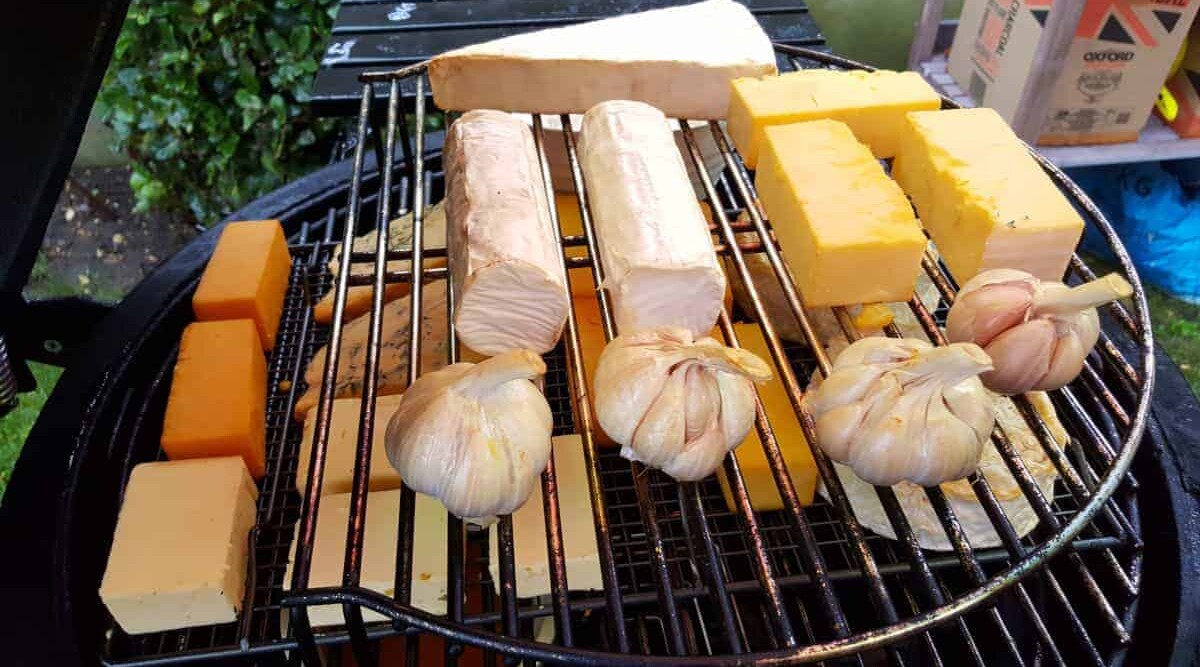
In this no-stone-unturned article we share and review our top choices for the best cold smoke generators you can buy today.
We then go on to explain cold smoking and the difference between it and hot smoking. We also cover some foods you can cold smoke (and some you shouldn’t) and what’s the best fuel to use.
Think about grilling for a second. Are you picturing a hot grill with flames licking delicately at sizzling steaks and juicy burgers?
Most people probably associate fire with outdoor cooking. There’s a reason why the site is called FoodFireFriends, right?
Of course, those of you who like to smoke know there’s way more to the story than just meat, veg, and flames.
Cold smoking is another fun way to make fantastic tasting food. If you’ve decided to give it a try, this article has your name all over it. (Not literally — Cold Smoke is a pretty weird name.)
At a Glance: The Best Cold Smoke Generators Discussed in our Guide
- Smokehouse Products Smoke Chief Cold Smoke Generator
- Smoke Daddy Big Kahuna Cold Smoke Generator
- ProQ Cold Smoke Generator
- A-MAZE-N Tube Smoker 12″
Note: Clicking the above links will take you to further information, current prices and customer reviews on Amazon.
Jump to:
Our Picks for 4 of the Best Cold Smoke Generators in 2024
Below are our reviews and thoughts on the 4 best cold smoke generators available today.
We kept the list small to only 4, because others are just a take on these, look and do exactly the same thing, but these are the originals and best.
Smokehouse Smoke Chief Cold Smoke Generator
This unit is an electrically powered smoke generator. You can run it off 110V AC from the wall, or 12V DC for tailgating, camping, or in case you want to use your car as a smoker, I guess.
It’s intended to be universal, allowing you to channel smoke into any chamber, including your regular barbecue if that’s all you’ve got.
The fuel source is wood pellets; pick your favorite and get up to 3 hours of smoke from a single cup. That’s not bad! Inside, an electric heating element sets the pellets smoldering and maintains a consistent flow of smoke until the supply of pellets is used up.
If you plan on doing a lot of cold smoking, especially on the go, the Smokehouse Smoke Chief is a great choice. If you only plan on dabbling occasionally, this unit might be overkill.
Also, if you’re not into anything DIY that has to do with power tools, do your homework before buying: check to see if you’ll need to add or enlarge any holes in your smoker to accommodate this generator. Odds are you’ll be able to fit it into an existing rotisserie hole, however.
Pros
- Doesn’t require matches or a lighter
- Starts making smoke quickly
- Creates a steady, long-lasting supply of smoke
- Free-standing
Cons
- Requires an electrical outlet nearby
- May need you to drill a hole in your container to use it
The bottom line is we dig this cold smoker!
Smoke Daddy Big Kahuna CSG
Somewhere between a fully powered and a fully passive cold smoke generator, the Big Kahuna is basically a small firebox with an air hose. You load the hopper with your fuel (you can use it for hot or cold smoking, so it accepts anything that burns) and connect to your smoker.
Once the fuel starts smoking, you turn on the adjustable air pump to start blowing the smoke out of the exit pipe and into your chamber.
If you have a dedicated space for smoking at home, the Big Kahuna is a great investment. We like the adjustable rate of airflow on the pump. (We also suspect you could replace it with a pump from an aquarium if you had to.)
It’s very solidly built and shouldn’t leak any smoke. This is definitely not for anyone who doesn’t want to drill new holes. Having said that, installation should be quite easy, and you only need to do it once.
Pros
- Generates a lot of smoke
- Cold or hot smoking (burns anything)
- Adjustable airflow
Cons
- Has to be mounted to the smoker (not portable)
- Have to light your own fuel
- Need a place for the air pump to rest
The Big Kahuna is an excellent add-on to your outdoor cooking and smoking repertoire. If you plan to take up cold smoking as a regular hobby, you should be pleased with the results.
ProQ Cold Smoke Generator
Like its close cousin, the tube smoker, this is a passive cold smoke generator system. Simply load the stainless steel contraption (it really does look like a maze for pet rodents) with the sawdust of your choice and ignite one corner. It really is the simplest of all cold smokers.
Because the wood is in such fine pieces, it will smolder away for hours. Gradually, the burning area will travel through the maze until all the sawdust is gone. It’s a very clever system for creating a prolonged and sustained burn.
The design of the ProQ Cold Smoke Generator is so perfect and yet so simple, you’ll wonder why you didn’t think of it on your own, invent it, and get really rich selling it.
It’s effective, creates a decent amount of smoke (which you can kind of control by lighting it in more or fewer places), and it generates for hours and hours. Highly recommended at any experience level.
Pros
- You can pack a lot of sawdust into a compact area
- Can be used with any kind of container
- Smokes up to 12 hours
- Can be lit from both ends for more smoke
Cons
- Sawdust must be absolutely dry, or it will stop burning
- It’s not always easy to get good sawdust
- Won’t blow smoke
Amaze-N Pellet Tube Smoker
This is a very simple, passive smoking system. That means there’s nothing to plug in — no heating elements, and no fans or blowers. You simply fill the metal cylinder with pellets, place it in your smoke box, and light it up.
The pellets will smolder away, and the resulting smoke wafts through the holes and adds flavor to your food. Cleverly, the tube is an oval through the cross-section so that it won’t roll away on you.
It lacks the gadget-factor of the powered cold smoke generators, but we admire the simplicity and functionality. It’s also cool that you can use it right out of the box and turn anything into a smoker — no drilling, mounting, or plugging in.
With up to 4 hours of smoking from a single load, you’ll be adding heaps of smoke flavor without needing to reload. Definitely recommended, especially for those just testing the waters — the smoke on the water, as it were.
Pros
- Pellets are convenient and easy-to-use
- You can use it in any type of smoking container, homemade or store-bought, or right in your barbecue
- Totally portable
- Good for hot or cold smoking
Cons
- Not self-igniting
- Doesn’t blow smoke
- May not produce enough smoke for large volume containers
What is Cold Smoking?
Cold smoking is a method for flavoring and preserving food. Historically, it was done to keep perishable food from spoiling back in the days before refrigeration.
The discovery was probably accidental, but it turns out smoke dries food out and introduces antimicrobials and antioxidants. Together, these properties can prevent food from going bad for a very long time.
Smoking can be done on many scales, from a small box to an entire room, but the principal is always the same. A fire burns, or at least smolders, outside the smoking chamber. The smoke passes through the chamber, but there is little to no transference of heat.
Food in the smoke chamber either sits on or is hung from a rack while the smoke envelops and permeates it for hours, or even days.
Over time, people realized that not only was cold smoked food well-preserved, but it also tasted amazing too. Savvy practitioners began experimenting with different types of wood to impart a variety of flavors. Today, cold smoking is still enjoyed around the world, despite the availability of convenient refrigeration.
The Difference Between Hot Smoking and Cold Smoking
Hot smoking is a method for cooking food rather than preserving it. The heat source is much closer to the food than it is during cold smoking. Therefore, the temperature in the smoking chamber is a lot higher, maybe even three times as high.
So, while you might cold smoke cured beef at about 80F, you’d crank it up to about 225F for hot smoking. The higher temperatures get the meat through the danger zone we mentioned before much more quickly, making it perfectly safe to eat once the minimum internal temperature of 145F is reached. (These temperatures are examples only. Different kinds of meat have different requirements for safety.)
What Foods Can You Cold Smoke?
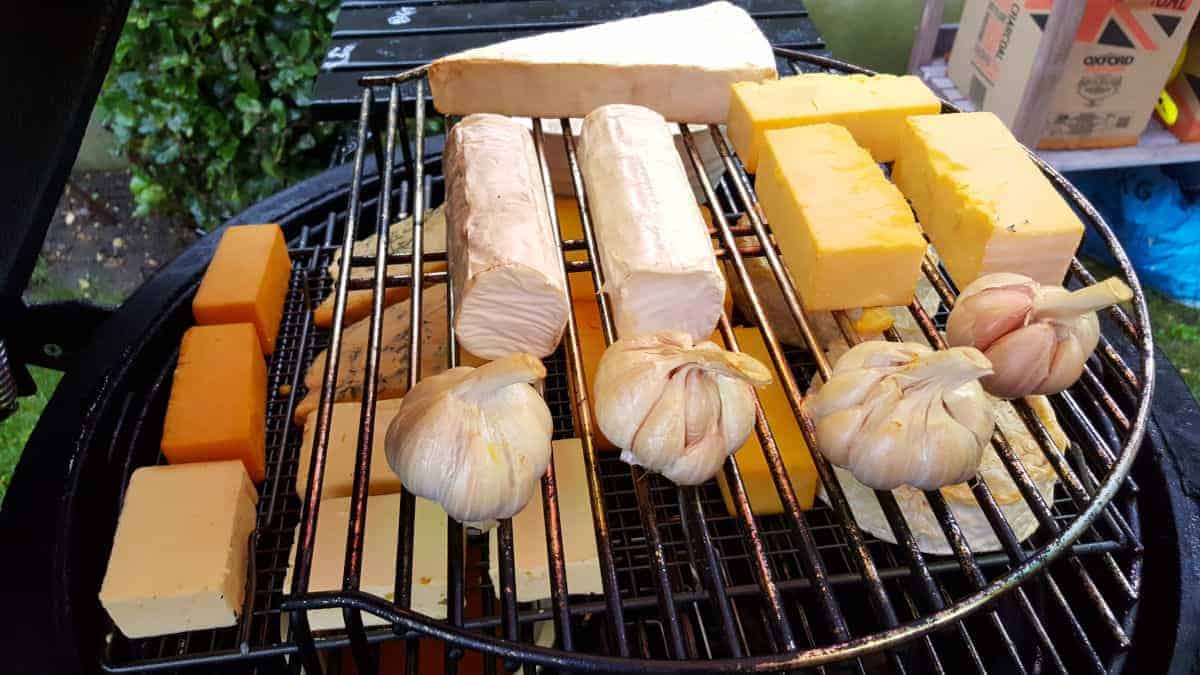
You might be better off asking what you can’t smoke!
So many foods benefit from cold smoking, it’s incredible. If you love smoky flavor, you’ll want to try it on just about everything, but here’s a pretty good list of commonly smoked foods to get you started:
Bacon, beef, butter, cheese, chicken, chili peppers, cream, fish, garlic, ham, honey, ketchup, lamb, lemons and limes, mustard, nuts, olive oil, olives, peaches, salt, sausages, scallops, seeds, turkey, vegetables and wild game.
Best Wood for Cold Smoking
All burning wood creates smoke, but not all of it is suitable for cold smoking. For example, evergreen wood smokes like crazy, but it releases resins when it burns, and these impart an undesirable flavor.
Stick with hardwoods like oak, cherry, apple, cherry, mesquite, and beech. Try different kinds of wood, and various combinations, until you find your favorite.
Now, before you go tossing some logs or large chunks into your firebox, remember that we want smoke, but not a lot of heat.
To do that, the wood needs to smolder slowly rather than burning hot and fast. The best way to achieve this is to use pellets or wood dust. Avoid chips, too. Yes, they’re small, and yes they come in great flavors. But, they burn hot like chunks of wood and are meant for hot smoking.
The Dangers of Cold Smoking
It is essential to understand the potential dangers of cold smoking, it is not the same as cooking it, and that’s the key to understanding what could go wrong if you try to smoke and consume certain foods.
Any food that needs to be kept at or heated to a specific temperature to avoid bacterial contamination is risky business for cold smoking.
Many kinds of meat (particularly beef, pork, and poultry) need to be stored at freezing or near-freezing temperatures and then cooked reasonably rapidly to an established “safe temperature.”
For example, chicken must be cooked to 165F (75C) to be sure it’s safe to eat. Why? Because bacteria that affect food don’t like very cold or very hot temperatures.
Cold smoking uses very low heat to flavor and preserve food, and it does so over extended periods of time. The USDA says the danger zone for bacteria growth is between 40F and 140F (4.5C and 60C). During cold smoking, your food will spend a lot of time resting in this range.
What kind of bacteria are we talking about? Really nasty ones. The list includes, but is not limited to:
- Coli
- Listeria
- Salmonella
- Botulism
- Staphylococcus
That’s kind of a “who’s who” of bacteria you really want to avoid. Of course, anything you could safely eat without cooking and that won’t “go bad” as it warms up is fair game. See the list above for some perfectly safe foods to use in your projects.
If you really do want to try cold smoking uncooked meat, it can be done. First, however, it is essential to cure the meat with curing salts.
Raw fish is an example of a kind of “meat” you can, more or less, cold smoke safely. Sushi is raw fish, and people eat it safely every day. However, the very young, the very old, pregnant women, and anyone with a compromised immune system should avoid eating raw fish.
In fact, until you’re certain you have perfected your curing and smoking technique and safety, don’t let anyone who falls into one of those categories eat anything other than non-meat items.
Our Top 5 Tips for Safe Cold Smoking
If you take all the necessary precautions, there’s no reason why you can’t enjoy delicious cold smoked food at home. Here are some best practices for safe cold smoking:
- Use extreme care when handling raw meat
- Find a reputable butcher or farm to supply your meat
- After buying meat, cure it ASAP
- Keep your cured meat cold and store it in a sealed container
- Don’t use random wood you find lying around, including what you find in your own yard — it may have been sprayed with pesticides, or the wood itself may be poisonous
How to Cold Smoke
If you’re new to the concept of cold smoking, and you’d like to know how it’s done, you’ve come to the right place.
There is far more to smoking than we could possibly cover here, but today is your lucky day. We have a Complete Beginners Guide to Cold Smoking you can read to get you started on your smoking journey.
Final Thoughts
Did we successfully whet your appetite for cold smoked goodies? It’s just one more trick to put up your grilling sleeve and a fun way to flavor food.
If you can’t get enough of that delicious smoky flavor, do yourself a favor and get yourself one of the four best cold smoke generators we’ve discussed in this guide.
Now, if you want to enjoy even more cold smoked goodness, send this article to a friend and see if you can get him or her hooked on it, too. We recommend sharing our articles as often as possible to save yourself from having to eat mediocre barbecue and pretend to enjoy it J
Also, we love to hear your stories, your questions, and feedback, so please do drop us a comment below.
We’re looking forward to hearing from you. Until then, thanks for reading!
Happy cold smoking!










































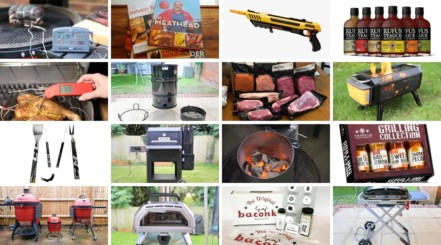
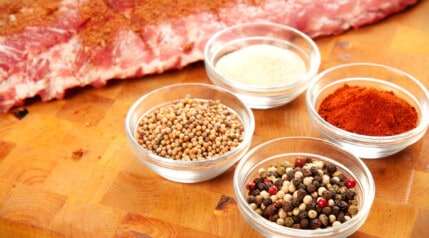
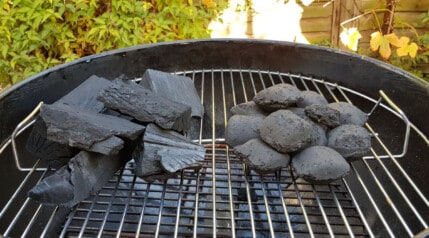
Does it really work properly.
Hi, Asraf,
Which model are you referring you to? I use a maze style one with dust myself. And yes, it works brilliantly!
Can you use pellets in the maze style generator?
I never have, so can’t say I’m afraid. I’m cooking again Tuesday, I’ll have a little experiment and see, then report back.
Just some info from the Netherlands.
I am a hot and cold smoker, especially for fish. Condensation during cold smoking often occurs in a humid atmosphere such as the Netherlands, with a mainly maritime climate.
Condensation with cold smoking:
Warm air can hold much more water vapor than cold air. 1 kilogram of air at 5 degrees Celsius can contain a maximum of 5.7 grams of water vapor. At 25 degrees Celsius, 1 kilogram of air can contain up to 20 grams of water vapor. Or, to put it another way: If you increase the temperature with the same amount of water vapor per cubic meter of air, the air will become a lot drier. (Relative air humidity.)
We call this physical phenomenon the maximum vapor pressure.
The maximum vapor pressure of a liquid at a given temperature is equal to the saturated vapor pressure of the liquid at that temperature.
If steam (= warm) condenses (= cools) then you get condensation = liquid.
Condensation on a cold glass of beer on a hot summer day is also one of those.
Suppose you go cold smoking with an outside temperature where the humidity is so high that the saturated vapor pressure is reached. In that case, you only need small temperature fluctuations to get condensation on a slightly colder surface, (lid of your smoking box/BBQ.)
Fog occurs at different temperatures, high and low, and that just means that the saturated vapor pressure of water has been reached at that temperature. (relative humidity is very high, 100%)
Cold smoking, when it freezes well for a few days, then you will hardly suffer from condensation because the icy air is bone dry due to the frost and therefore contains little water vapor.
If that dry air warms up without the presence of moisture, then that air will only become drier and the chance of condensation will not be present if it encounters a colder surface.
This happens in practice:
Water vapor saturated air with temperature X enters your smoke barrel and is burned by the smoldering smoke moth and heated slightly. Therefore, it can absorb a little more water vapor present in the environment, the air rises and encounters the cold lid through which the air again cools down. It can no longer hold the absorbed water vapor that this air had absorbed after it was heated up by the smoke moth. After all, the air was already saturated with water vapor when it was even colder.
This extra water vapor absorbed during heating must therefore release from the air again, and will precipitate on the lid as condensation.
As long as the relative humidity is low and the cool air can warm up and cool down again without becoming saturated with water vapor, everything is fine, without condensation.
Fascinating stuff. Thanks for this, Harry.
Will there be a test? I’m not ready for a test.
I use a maze style smoker, but have problems keeping the wood dust smoldering?
What is the secret, apart from dry wood dust and some airflow?
Hi, Andrew.
I use one myself successfully. The ‘dust’ needs to be fine, because if too coarse, then it fails to stay alight.
Also, as you say, it needs to be dry. I put mine, spread very thinly, on a large plate in the microwave for a couple of minutes, then stir it about, and you see a fair bit of water escape as steam during this process.
Then, I make sure the maze is full. Dust filled up to almost the top of each wall, but never over as you can get a leap across, and it starts to burn in multiple places if not careful.
Following this process, I’ve never failed to keep it lit and have used a maze-style cold smoker multiple times each year for 5 or 6 years now.
If you can, send me a close-up photo of the dust you use and a picture of a filled maze to see if I can spot anything different from what I do.
+I have a traeger 1300 I wanted to add more smoke flavor to my cooks ,so I just bought a Smoke Chief cold smoke generator .Now I am trying to learn how to manage this device. any help you can give me Thanks
Hi Jerome. What is it you’re having trouble with?
Recently, I cold smoked (for 2.5 hrs) a prime brisket flat using hickory chips in a smoke tube. No curing salts were used. The meat was then slow cooked in souse vide water bath for 48 hours at 140 deg. f. The smoker temp. was around 65 deg. f.
The flat was well trimmed.
Start to finish the flat lost only 25% of its weight! No “STALL” thus less weight loss and
a juicer product. It was very tender. Interesting huh!
D.P.